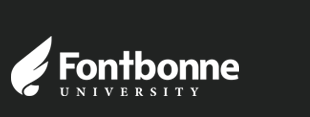
2023 SLP Posters
Faculty Advisor
Catherine Schroy
Files
Description
This session provides an overview of the use, benefit, and implementation of Augmentative and Alternative Communication (AAC) with children who present with challenging behaviors. The basic process of when to implement AAC will be discussed. There will be a brief review of literature regarding the benefit of AAC on students with challenging behaviors. Application of this knowledge in practice will also be discussed.
Disciplines
Communication Sciences and Disorders | Speech and Hearing Science | Speech Pathology and Audiology
References
American Speech-Language-Hearing Association. (n.d.-a). Augmentative and alternative communication (AAC). American Speech-Language-Hearing Association. https://www.asha.org/njc/aac/
American Speech-Language-Hearing Association. (n.d.-b). Challenging behavior as communication. American Speech-Language-Hearing Association. https://www.asha.org/njc/challenging-behavior-as-communication/
American Speech-Language-Hearing Association. (n.d.-c). Scope of practice in speech-language pathology. American Speech-Language-Hearing Association. https://www.asha.org/policy/sp2016-00343/#Domains
Andzik, N. R., Schaefer, J. M., & Christensen, V. L. (2021). The effects of teacher-delivered behavior skills training on paraeducators’ use of a communication intervention for a student with autism who uses AAC. AAC: Augmentative & Alternative Communication, 37(1), 1–13. https://doi.org/10.1080/07434618.2021.1881823
Beukelman, D. R., & Light, J. C. (2020). Augmentative & alternative communication supporting children and adults with complex communication needs (5th ed.). Paul H. Brookes Publishing Co.
Downey, D., Daugherty, P., Helt, S., & Daugherty, D. (2004). Integrating AAC into the classroom. The ASHA Leader, 9(17), 6–36. https://doi.org/10.1044/leader.ftr2.09172004.6
Drager, K., Light, J., & McNaughton, D. (2010). Effects of AAC interventions on communication and language for young children with complex communication needs. Journal of Pediatric Rehabilitation Medicine, 3(4), 303–310. https://doi.org/10.3233/PRM-2010-0141
Frea, W. D., Arnold, C. L., Vittimberga, G. L., & Koegel, R. L. (2001). A demonstration of the effects of augmentative communication on the extreme aggressive behavior of a child with autism within an integrated preschool setting. Journal of Positive Behavior Interventions, 3(4), 194. https://doi.org/10.1177/109830070100300401
Fujiki, M., Brinton, B., Morgan, M., & Hart, C. H. (1999). Withdrawn and sociable behavior of children with language impairment. Language, Speech & Hearing Services in Schools, 30(2), 183–195. https://doi.org/10.1044/0161-1461.3002.183 Fujiki, M., Brinton, B., & Clarke, D. (2002). Emotion regulation in children with specific language impairment. Language, Speech & Hearing Services in Schools, 33(2), 102–111. https://doi.org/10.1044/0161-1461(2002/008)
Tiger, J. H., Hanley, G. P., & Bruzek, J. (2008). Functional communication training: A review and practical guide. Behavior Analysis in Practice, 1(1), 16–23. https://doi.org/10.1007/BF03391716
Walker, V. L., & Snell, M. E. (2013). Effects of augmentative and alternative communication on challenging behavior: A meta-analysis. AAC: Augmentative & Alternative Communication, 29(2), 117–131. https://doi.org/10.3109/07434618.2013.785020
Presentation Type
Poster Presentation
College
College of Education and Allied Health
Department
Communication Disorders and Deaf Education
Degree Name
Master of Science (MS)
Degree Program
Speech-Language Pathology
Publication Date
Spring 2023
Publisher
Fontbonne University Archives
City
St. Louis, MO
Recommended Citation
McFarland, Kerri, "The Use of AAC to Reduce Challenging Behaviors in Children" (2023). 2023 SLP Posters. 4.
https://griffinshare.fontbonne.edu/slp-posters-2023/4
Creative Commons License

This work is licensed under a Creative Commons Attribution-Noncommercial-No Derivative Works 4.0 License.



